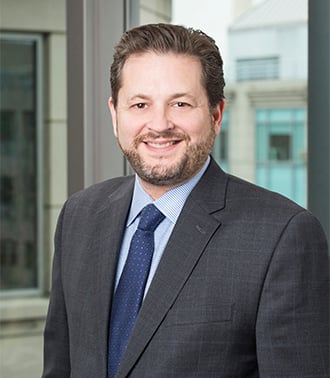Amarin v. FDA Reaffirms that FDA Restriction of Truthful and Non-Misleading Speech by Pharmaceutical Manufacturers is Unconstitutional
On Friday, August 7, 2015, the US District Court for the Southern District of New York issued its much-anticipated ruling on Amarin's challenge to the Federal, Food, Drug, and Cosmetic Act's (FDCA) misbranding provisions. In relevant part, the Court granted Amarin a broad injunction permitting the company to engage in truthful and non-misleading speech about the unapproved use of Vascepa® (icosapent ethyl) (i.e. to treat patients with persistently high triglycerides).1 The Court found that, under United States v. Caronia,2 truthful and non-misleading speech may not form the basis of a misbranding prosecution under the FDCA. The Court further concluded that based on information presently known, the statements and disclaimers proposed by Amarin are truthful and non-misleading, and thus protected under the First Amendment.
The Court's decision is critical for pharmaceutical manufacturers and related stakeholders for a number of reasons. First, the Court held that the 1938 and 1962 amendments to the FDCA must be construed in light of the subsequent developments in First Amendment law, such as Central HudsonGas and Electric Corp. v. Public Service Communication of New York3 and Sorrell v. IMS Health, Inc.4 Second, the Court rejected the Food and Drug Administration's (FDA) science versus promotion and solicited versus unsolicited distinctions as being wholly at odds with these First Amendment precedents. Third, the Court recognized that although speech can be evidence of intent in a criminal prosecution, there must be some independent act to support the crime. Because there was no independent act in the Amarin case (e.g., kickbacks to induce prescriptions for unapproved uses), the Court reasoned that Amarin was entitled to First Amendment protection for its speech. Finally, the Court emphasized that pharmaceutical manufacturers would be prudent in proposing to FDA the speech about unapproved uses that they wish to make and explaining why it is truthful and non-misleading.
Although the Government may appeal this ruling, the Second Circuit, which decided Caronia, would hear the appeal. It is also possible that the case could subsequently be appealed to the full appellate court or even the Supreme Court. The appellate process thus could take some time to play out. Nevertheless, the Amarin decision is significant and suggests that the agency may need to modify applicable FDA guidance documents to accommodate First Amendment concerns. These would include, at a minimum, FDA's Draft Guidance for Industry, Responding to Unsolicited Requests for Off-Label Information About Prescription Drugs and Medical Devices5 as well as the agency's proposed scientific exchange guidance, which FDA said it was actively working on after granting two citizen's petitions.6
I. Procedural and Factual Background
The Amarin case involves Amarin's Omega 3 fatty-acid product, Vascepa, which FDA approved for use in patients with very high triglyceride levels (? 500 mg/dL) based primarily on data from a Phase III clinical trial. To support this approval and a second proposed approval in a broader patient population, the company also designed and completed a second Phase III clinical trial to study the effect of Vascepa on triglyceride levels among statin-treated patients with "persistently high" (200-499 mg/dL) triglycerides (the ANCHOR trial), and entered into a separate special protocol assessment (SPA) with FDA. Under this SPA, Amarin also agreed to conduct a cardiovascular outcomes trial (the REDUCE-IT trial) to assess whether Vascepa would be effective in reducing cardiovascular events.7 When Amarin submitted an application for approval of the initial indication, FDA reviewed the ANCHOR data as a second, confirmatory trial and included the combined safety results from both trials in the approved label for the initial indication.
Despite satisfying all of FDA's requirements to obtain approval for this new indication under Amarin's supplemental new drug application (sNDA), an FDA Advisory Committee questioned data from the ANCHOR trial regarding cardiovascular outcomes. As a result, the Advisory Committee voted 9 to 2 against approval of Vascepa for patients with persistently high triglycerides. Shortly thereafter, FDA issued a Complete Response Letter (CRL) to Amarin explaining that the company needed to develop additional data showing a reduction in cardiovascular events for patients with "persistently high" triglycerides. Further, Amarin maintained that FDA's CRL included a "warning that any effort by Amarin to market Vascepa for the proposed supplemental use could constitute 'misbrand[ing]'" under the FDCA.8
In May 2015, Amarin filed a Complaint for declaratory relief asking the Court to declare that the company had a First Amendment right to communicate truthful and non-misleading information to physicians about the use of Vascepa in patients with persistently high triglycerides. Amarin asserted that FDA's failure to clarify what, if any, communications about unapproved uses is permitted after Caronia "had a chilling effect on drug manufacturers' speech."9
In its complaint, Amarin cited robust clinical data and numerous scientific studies, as well as compendia listings, to show that the information it wished to convey was truthful and not misleading. Further, Amarin's complaint included detailed disclaimers that it proposed to require its representatives to make in speaking about the unapproved use of Vascepa. The disclaimers would make clear, among other things, that the drug was not FDA-approved for patients with persistently high triglycerides. The government vigorously opposed Amarin's request for relief, arguing, among other things, that it was constitutionally permissible for FDA to rely on Amarin's truthful and non-misleading, but unapproved use, speech as evidence of intent to misbrand Vascepa.10
II. Analysis
A. Interplay of the First Amendment and FDCA
In granting Amarin's request for injunctive relief, the Court made some important comments about the inter-relationship of the First Amendment and FDA's regulation of manufacturer truthful and non-misleading speech about unapproved uses of their products. First, the Court reiterated that, under Sorrell and Caronia, "the FDA may not bring [a misbranding] action based on truthful promotional speech alone, consistent with the First Amendment."11 The Court rejected the government's argument that Caronia should be limited to its facts -- namely, a case that was presented to the jury specifically as a prosecution of Caronia's speech, rather than relying on speech as evidence of intent of another crime. The Amarin Court reasoned that a "fair reading of [Caronia] refutes the FDA's view that the Second Circuit's ruling was limited to the facts of Caronia's particular case."12 The Court explained:
| The Second Circuit's thoroughgoing First Amendment analysis in Caronia, which led it to construe the FDCA's misbranding provisions so as not to reach truthful speech promoting off-label use, further defeats the FDA's attempt to marginalize the holding in that case as fact-bound. The Circuit cast the issue as whether a misbranding prosecution that 'identified [a defendant's] speech alone as the proscribed conduct' is constitutionally permissible. Id. And the Circuit's ensuing analysis underscored the categorical, rather than case-specific, nature of its holding that it is not.13 | |
After reciting a detailed summary of the Second Circuit's holding and Central Hudson analysis in Caronia, the Court rejected FDA's "reading of Caronia as a mere artifact of that case's particular facts and circumstances." Instead, the Court emphasized that by "its explicit terms and its clearly-articulated reasoning, Caronia simply cannot be read as the proverbial 'ticket good for one day only.'"14
B. FDA's "Frontal Assault" Theory
Next, the Court rejected the Government's argument that Amarin's case was a "frontal assault" on the FDA's drug approval regime that, if adopted, would permit manufacturers to circumvent the FDA approval process for new indications of approved products. The Court stated that the "short answer" to this government argument is that "the FDCA's drug-approval framework predates modern First Amendment law respecting commercial speech."15 The Court reasoned that the Supreme Court's decisions in Central Hudson (1980) and Sorrell (2011) postdate the 1962 amendments to the FDCA (which mandated FDA review of drug applications to ensure safety and efficacy). Thus, the Court explained that to the extent the provisions of those FDCA amendments implicate speech, they "must be considered, and to the extent ambiguous construed, in light of contemporary First Amendment law, under which truthful and non-misleading commercial speech is constitutionally protected, subject to the Central Hudson framework."16 The Amarin Court explained that Caronia reflects a "careful Central Hudson analysis" and identifies "alternative, less speech-restrictive, means for the FDA to achieve its objectives."17 The Court noted that, if the FDA was concerned with the effects of the Caronia opinion, then it should have petitioned for certiorari or sought en banc review of that opinion, rather than re-litigating Caronia in this context. The government did neither.
C. FDA's Scientific vs. Promotional, Unsolicited vs. Solicited
The Court rejected FDA's request to limit the holding of Caronia to truthful and non-misleading speech that was consistent with its scientific exchange and unsolicited request guidance (e.g., Caronia only applies to truthful and non-misleading speech in scientific settings, by scientific personnel and in responses to unsolicited requests).18 In rejecting this Government argument, the Court explained that the First Amendment recognizes no distinction between speech made by scientific personnel rather than "promotional" personnel, and similarly recognizes no distinction between speech that is solicited rather than speech that is not solicited. Specifically, the Court concluded:
| Caronia did not turn on the intent element of misbranding. It turned on the actus reus requirement. And Caronia's holding was that the FDCA's misbranding provisions cannot constitutionally criminalize, and therefore do not reach, the act of truthful and non-misleading speech promoting off-label use. The Circuit did not limit that holding to a subset of truthful promotional speech, such as statements responding to doctors' queries or statements by non-sales personnel. Caronia instead construed the misbranding provisions not to reach any 'truthful off-label promotion of FDA-approved prescription drugs.' 703 F.3d at168-69. And the reasons the Circuit gave in Caronia for that holding apply across-the-board to all truthful and non-misleading promotional speech. Indeed, the speech on which the Caronia prosecution itself was based involved the very types of statements promoting off-label use that the FDA most disfavors: proactive oral statements to a doctor by a manufacturer's sales representative. See id. at 155-56.19 | |
D. False and Misleading Speech
The Court agreed that Caronia does not prohibit the government from relying on truthful and non-misleading speech to establish intent to engage in an independent criminal act. However, the Court concluded that the proposition that speech can be admissible in evidence to prove intent or motive is beside the point in the context of a case directed to the actus reus of the crime, such as Amarin's case. As the Court explained:
| Amarin's lawsuit is directed instead to the act requirement-the situation in which a misbranding action takes aim at truthful, non-misleading speech. And Caronia construed the misbranding statute, categorically, not to reach a manufacturer or its representative under those circumstances. That construction applies no matter how obvious it was that the speaker's motivation was to promote such off-label use. Promoting such use, in fact, was transparently Caronia's intent.20 | |
The Court agreed with the government that speech about an unapproved use might be admissible in a case where misbranding is based on independent actions other than truthful speech (e.g., providing unlawful remuneration to physicians as an alleged reward for their prescribing a drug for an unapproved use).21 Additionally, the Court recognized two important limitations on its holding: (a) false or misleading speech remains constitutionally unprotected and thus subject to prosecution; and (b) non-communicative activities are not protected and also are subject to prosecution. However, where the truthful and non-misleading speech is the crime itself, as is generally the case in a misbranding litigation involving failure to provide adequate directions for a drug's intended use, the Court found that the prosecution would be inconsistent with the First Amendment.
To mitigate risks that speech could be false or misleading, the Court encouraged manufacturers to work with FDA to ensure that any communications they wish to make about unapproved uses of their medicines are truthful and non-misleading. For example, the Court noted that "prior consultation with FDA may prove a helpful prophylactic, and may avert misbranding charges where the FDA and the manufacturer would take different views of a statement."22 Otherwise, the Court advised, a "manufacturer that leaves its sales force at liberty to converse unscripted with doctors about off-label use of an approved drug invites a misbranding action if false or misleading (e.g., one-sided or incomplete) representations result", and "Caronia leaves the FDA free to act against such lapses."23
E. Specific Vascepa Communications
As noted above, Amarin proposed to include specific disclaimers and disclosures to the truthful and non-misleading speech it wished to engage in, including dissemination of a reprint of its Phase III clinical trial along with a summary of the key trial results. The Court reviewed the specific disclaimers and communications, making slight modifications to the proposals, but generally adopted them, including Amarin's requests concerning the dissemination of the reprint of the Phase III clinical trial. Among these proposals was a statement regarding coronary heart disease, which FDA disputed.24 The Court, however, rejected FDA's concerns that "future events" (e.g., new scientific evidence) may one day make the coronary heart disease claim misleading and that this argument could not "justify treating [a] presently true and non-misleading statement as if it were unprotected speech." Instead, the Court emphasized that:
| "[A] governmental body seeking to sustain a restriction on commercial speech must demonstrate that the harms it recites are real and that its restriction will in fact alleviate them to a material degree"; "[t]his burden is not satisfied by mere speculation or conjecture." Edenfield v. Fane, 507 U.S. 761, 770-71 (1993). The FDA cannot use the "rote invocation of the words 'potentially misleading'" to discharge its burden. Ibanez v. Fla. Dep't of Business & Prof. Reg., Bd. of Accountancy, 512 U.S. 136, 146 (1994).25 | |
The Court did acknowledge that "FDA is at liberty to reassess the factual accuracy" of claims as circumstances change, and thus, "the Court would expect Amarin to respond accordingly." Thus, while the Court's approval of Amarin's communications were truthful and non-misleading based on the "present record," the Court stated that Amarin "bears the responsibility, going forward, of assuring that its communications to doctors regarding off-label use of Vascepa remain truthful and non-misleading."26
The Amarin decision is a very important precedent on the application of the First Amendment to truthful and non-misleading communications with health care professionals about unapproved uses of medicines. Please do not hesitate to reach out to your Arnold & Porter LLP contact if you have any further questions about this matter, or how the Amarin decision may affect your company's compliance programs and policies.
-
Amarin Pharma, Inc. et al. v. U.S. Food & Drug Admin., et al., Opinion & Order, No. 1:15-cv-03588 (S.D.N.Y.) (hereafter "Amarin Decision").
-
-
447 U.S. 557 (1980)(holding that "(s)peech in aid of pharmaceutical marketing … is a form of expression protected by the … First Amendment").
-
-
(Dec. 2011) available here.
-
Amarin Decision at 19, 32 (noting that FDA told Amarin during the litigation that "'new guidance will be forthcoming'" and that FDA was "'engaged in a comprehensive review of its regulations and guidance documents regarding manufacturers' dissemination of information regarding their medical products, and new guidance will be forthcoming'")(citing Dkt. 24, Ex. A, at 5-6 ("Woodcock Letter")). See also FDA, Letter to Alan R. Bennett, et al. from Leslie Kux, J.D., Assistant Commissioner for Policy (Jun. 6, 2014)(granting two citizen petition requests submitted on behalf of members of the Medical Information Working Group (MIWG) that requested that FDA clarify its regulations and policies governing certain communications and activities related to investigational new drugs and devices and unapproved uses of marketed drugs and devices).
-
As a condition of the SPA, FDA required that the REDUCE-IT trial would need to be at least 50% enrolled before FDA would accept Amarin's supplemental new drug application (sNDA) for use of Vascepa in patients with persistently high triglycerides.
-
Amarin Pharma, Inc. et al. v. U.S. Food & Drug Admin., et al., Complaint at 27 ¶ 90 (May 7, 2015).
-
-
On June 5, 2015, Dr. Janet Woodcock, Director of FDA's Center for Drug Evaluation and Research (CDER), sent a letter to Amarin in an attempt to narrow the parties' dispute. In particular, FDA conceded that some of the materials proposed by Amarin would be permitted because they would "'fall within the scope' of existing FDA guidance allowing manufacturers to disseminate to doctors 'truthful and non-misleading scientific or medical publications on unapproved uses." Amarin Decision at 31-32.
-
-
-
Id. at 46 (quoting Caronia, 703 F.3d at 162).
-
Id. at 48 (citing Smith v. Allwright, 321 U.S. 649, 669 (1944) (Roberts, J., dissenting)).
-
-
-
-
Specifically, the FDA asked the court to look at statements made proactively to a doctor as opposed to those responding to a doctor's query; and at statements made to a doctor by a sales or marketing employee, as opposed to those by a scientist or physician. Id. (citing FDA Br. 17; Tr. 53-55, 62-65).
-
Id. at 50-51 (bold emphasis added).
-
-
Id. at 52 (maintaining that "Caronia does not limit the Government's ability to use promotional speech to establish intent in a misbranding action with a proper actus reus").
-
-
-
Specifically, Amarin wished to include the following statement: "Supportive but not conclusive research shows that consumption of EPA and DHA omega-3 fatty acids may reduce the risk of coronary heart disease." Id. at 29.
-
-



